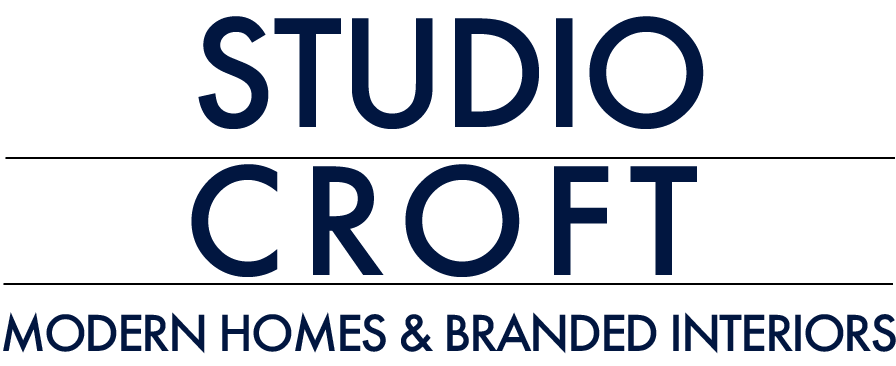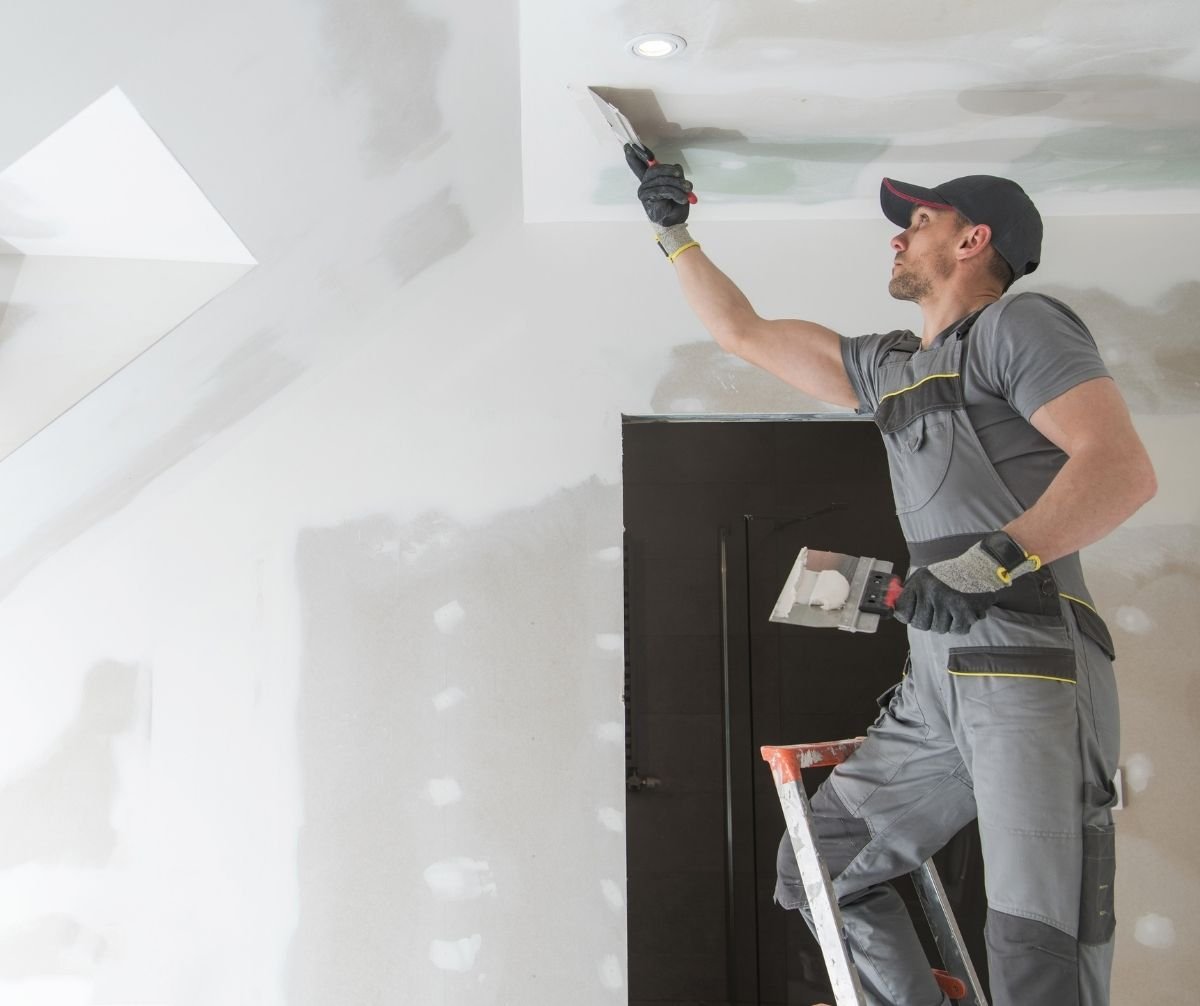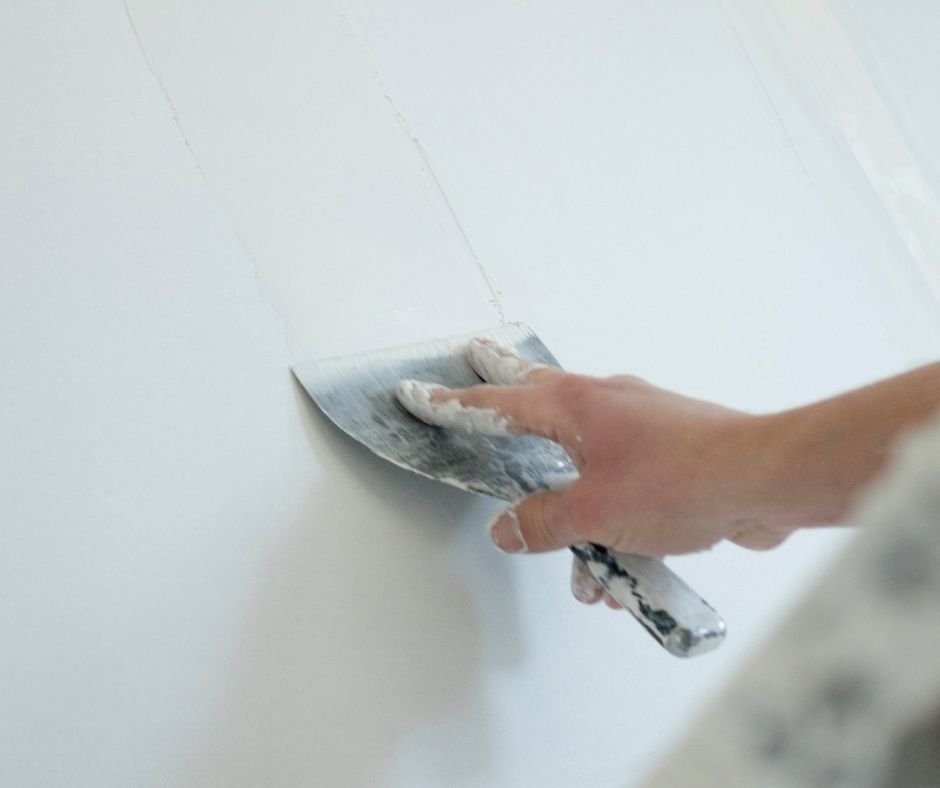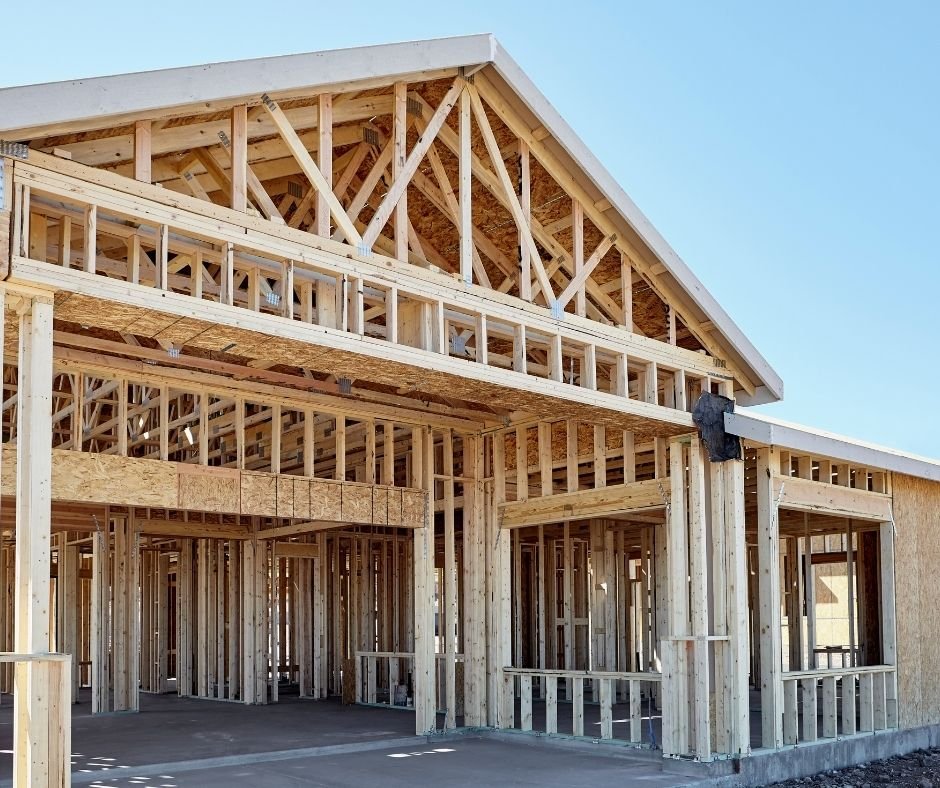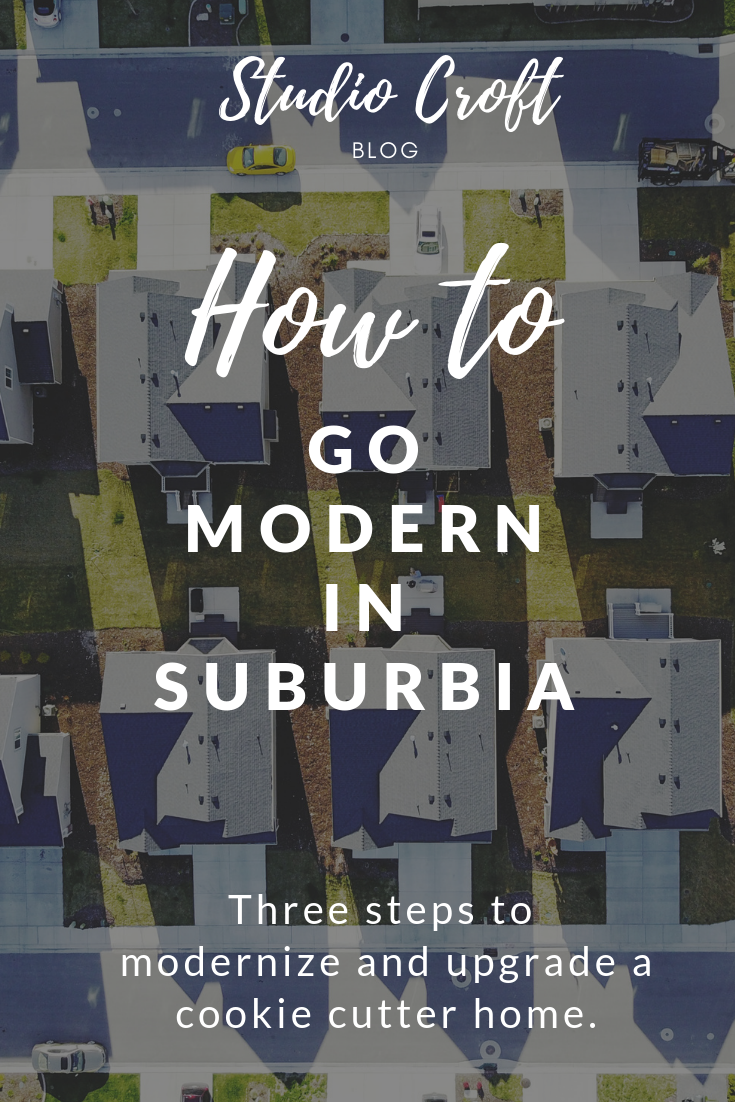Do Modern Homes Have Textured Walls?
Just like a well done drywall job, the answer to this question has many layers.
A Studio Croft Modern Homes client recently contacted me with questions surrounding drywall in their 800+ Square Foot home addition project. I think the main points of the conversation are worth sharing here with those of you who may be facing the similar drywall decisions.
Here in Texas, the standard drywall finish in almost every builder-grade tract home (or even builder-led custom homes) is a knocked down texture with rounded corner beads. They have their reasons. A textured finish can hide a lot of imperfections. “The smooth look on walls can be a regional thing, with workers on the East Coast accustomed to providing that look through the years. Meanwhile, homebuilding trends on the West Coast, and elsewhere, moved in the middle of the past century to the simpler use of orange-peel, knockdown, faux-stucco, and other finishes that are quicker to apply and that cover a multitude of sins.” says Lane Cooper in a recent Copper Design Build blog post .
“The smooth look on walls can be a regional thing, with workers on the East Coast accustomed to providing that look through the years. Meanwhile, homebuilding trends on the West Coast, and elsewhere, moved in the middle of the past century to the simpler use of orange-peel, knockdown, faux-stucco, and other finishes that are quicker to apply and that cover a multitude of sins”
Personally, I have even had a local real estate agent tell me that they can look at the dry wall finish and corner bead style to make a fairly accurate guess for the age of a home. They even went so far as to indicate that textured walls were the desired standard of the populous and that homes with a smooth wall texture and square corners were out-of-date/favor. For good reason, we knew they were not the agent for us!
However, most homeowners investing in interior designer-driven or architect-driven building projects, aren’t interested in the ‘standard’. They are looking for options that are the best fit for their unique project and modern aesthetic. The good news is, there are options beyond the builder standard! In this post we are focusing on dry wall finishes, but there are many other wall finishes including a variety of wall coverings, specialty paint or plaster finishes, modern wood paneling, wood slat walls, large format tile slabs and more.
While it is certainly possible to add modern elements to an existing space that has the standard textured drywall finish, in projects requiring construction, we do prefer to recommend starting with a smooth canvas (a.k.a. wall surface). It is part of the base layer to building a more modern home aesthetic overall.
What drywall finish options do I have?
The two industry documents that are referenced for drywall finishing are the Gypsum Association’s GA-216-2021 “Application and Finishing of Gypsum Panel Products” or the American Society for Testing and Materials ASTM C840 “Standard Specification for Application and Finishing of Gypsum Board”.
According to the Gypsum Association standard, drywall finishes are classified with levels between 0 to 5. You can find all 6 of the drywall finishes listed out here and here.
Drywall Finish Level 0 is “No taping, finishing, or accessories required” which is typically used in plenum areas above ceilings, in attics, service corridors, or as base layers in multi-gypsum layered assemblies.
Going in steps up all the way up to Level 5 “All joints and interior angles shall have tape embedded in joint compound and shall be immediately wiped with a joint knife leaving a thin consistent coating of joint compound over all joints and interior angles. Two (2) separate coats of joint compound shall be applied over all flat joints and one (1) separate coat of joint compound shall be applied over interior angles. Fastener heads and accessories shall be covered with three (3) separate coats of joint compound. A thin skim coat of joint compound or a material manufactured especially for this purpose shall be applied to the entire surface. The surface shall be smooth and free of tool marks and ridges.” You can certainly see why Level 5, often called a “Gallery Finish”, is considered a more premium option due to the amount of craftsmanship and labor that goes into making the surface very smooth.
What drywall finish should I choose for my modern home?
Overall Appearance of Drywall in a Modern Home
There are also a lot of reasons not use a textured drywall finish in a modern home, but maybe the most significant of all is the overall appearance. If you want a very clean, minimalist, simple aesthetic, or wall coverings (paper or textile), you will want to have a smooth Level 4 or Level 5 drywall finish. Especially when it comes to wall covering, we make sure the General Contractor knows where it will be long before it comes time to drywall and that they adhere to the manufacturer’s recommended surface preparations.
Drywall Finish Considerations for New Construction verses Renovation
One important consideration is whether the project is a renovation or ground-up new construction? The choices for drywall finish may be different based on the type of project.
For a renovation project, there are two ways to achieve a smooth finish on drywall. Taking down the existing drywall to the studs and starting with freshly hung wallboard, would be the first option considered where more in-depth demo and construction is involved. The second option is skim coating and sanding existing textured surfaces with a layer of drywall compound until smooth. Additional information on that process can be found here.
New construction makes the decision making process easier, but there are still other factors to consider, which we discuss below.
What other things should I consider when making drywall decisions?
Quality of House Framing When Considering Drywall Finishes
The appearance of smoothness on a wall finish, actually starts with the framing. Metal studs, used in commercial buildings, are very straight. However, high end home construction often uses engineered lumber for framing to ensure a level wall surface with no bowing, humps or dips.
”I choose the framing lumber package and use a top-notch framer because mistakes have nowhere to hide on Level 5–finish walls, and a bowed stud on a Level 5 drywall finish or an expensive tile backsplash is costly. Flaws are especially noticeable on drywall that has raking light from high windows washing the surface. That’s why the emergence of engineered framing lumber has become a hot topic for builders like me.” says Austin Builder, Matt Risigner, in an article for website www.residentialproductsonline.com/
If you have the opportunity to be building from the ground up, start with your desired end in mind and make choices to ensure success every step of the building process, including framing!
Surface Illumination on Walls
Consider what lighting sources will be illuminating the wall surfaces of your home. We love all the natural light, but know that it doesn’t come without it’s challenges!
“Flaws are especially noticeable on drywall that has raking light from high windows washing the surface. That’s why the emergence of engineered framing lumber has become a hot topic for builders like me.”
Drywall Corner Beads: Should You Choose Rounded or Squared?
My client really wanted to use square corner beads for the more modern look in the large portion of her first floor renovation and addition. However, the rest of her home had rounded corners. Despite a few inconspicuous rounded corners left on the first floor, most were thankfully on the second level. She was unsure about mixing the two styles.
Here was my advice to her: “Sometimes I would suggest that a detail like the style of corners should be consistent throughout the house, but I think you have to ask yourself these questions:
Will this drywall detail it be noticeable?
Will someone who doesn’t know even notice this drywall detailing it at all?
Will you notice the mixed drywall styles in your own home?
Are you doing this for you or for resale?
As a professional interior designer, if it is something that I will ‘see’ every single time I am in the room (and I mean, like I notice it every time because it’s something important to me and I can’t ‘unsee’ it), then it’s worth making the change and doing what supports your goals. Ultimately, because of the amount of square footage this client was adding to a large open floor plan, she decided to go for it and chose to use the square corner beads and the smooth texture on the drywall in any areas of new work.
Hiring Skilled Dry Wall Subs for Your Modern Home
Again, walls with no texture require a certain level of skill and craftsmanship. The dry wall subs and the painters have to do a good job. Any imperfections will be more noticeable on the flat surface.
Choosing the Correct Drywall Thickness
This video from Matt Risinger, Austin Builder and YouTube personality of The Build Show Network, is one of my favorite’s to share with clients considering a smooth drywall finish. He cites, as best practice for a smooth wall finish (either Level 4 or Level 5 drywall finish), using 5/8” drywall as opposed to the typical 1/2” which is common practice. Thicker drywall board ends up being a little more rigid and less wavy overall. There are also interesting corner bead considerations that are discussed in the same video, such as vinyl vs steel, with a demo of why one may be preferred over the other.
If the 1/2" drywall is already hung and you are coming to the texture or smooth question later in the process, a smooth finish is still possible. The drywall subs will likely need to spend more time sanding and prepping before painting to ensure the best outcome. While we recommend 5/8” thick drywall and it is best practice for sure, it does not have to be a deal breaker if it is too late to make a change.
Modern Home Interior Trim Styles
Trim can be a big consideration when thinking through drywall texture your design project. A lot of modern trim details for door casings, window casings and sills, and base moldings are very clean and flush. They may not work well with a texture on the wall, depending on the aesthetic desired. Will there be J trim at doors or even trimless doors? Recessed/ Flush base boards? Reveals or Reglet Trim? These special details make a huge impact, but can also require significant coordination between the dry wall subs and the finish carpenters.
I urge clients to think ahead about these and a few other details that can affect the drywall process, including specialty millwork trim, specialty trim kits for flush lighting fixture housings and any kind of mud-in speakers. It is important to have all of this worked out before drywall is installed.
Here are some additional resources for modern trim considerations:
Modern Home Trim: https://www.youtube.com/watch?v=Xtev-uJsAWM
Window Trim 10 Ways video by 30 x 40 Design Workshop: https://www.youtube.com/watch?v=qbf6ozaKoSg
Talk to Your General Contractor in ADVANCE about Drywall Choices
There are things that the general contractor can do to make the final outcome of a Level 4 or Level 5 drywall finish more successful. Make sure that your contractor is on the same page with your desired finish and trim selections BEFORE the drywalling phase begins.
If you are unsure about the outcome, ask for them to do a mock-up (a sample) of just one section or show photos of work they have done with that level of finish before. Ask for the mock-up to be constructed near or opposite a wall that will get a lot of natural day light and you can judge how any flaws in the surface will be illuminated.
We love being involved in projects before construction begins!
We cover topics like this through our Design Master Plan, so that we can guide our clients to the best outcomes for their desired results, smooth walls and all!
Reach out if you need guidance in the early phases of your modern home project!
